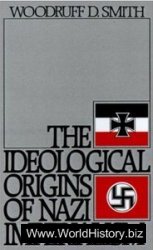CAM AIR INTERNATIONAL: United States (1983-1984). Miami-based Fleming International Airways is reformed in 1983 and renamed. Previous operations are maintained, including scheduled cargo flights to Atlanta, Baltimore, Boston, Chicago, Dallas (DFW), Detroit, Miami, and New York (JFK).
The fleet of 4 Boeing 727-100s and 8 Lockheed L-188AF Electras is also employed to subcontract work from freight forwarders, package express firms such as UPS (United Parcel Service) and other cargo airlines, like Emery Air Freight.
The lack of traffic, coupled with mounting expenses during a recessionary year, bring significant fiscal difficulties that force the carrier to shut down in 1984. The company’s assets will be purchased into Spirit of America Airlines.
CAMAI AIR: P. O. Box 787, Bethel, Alaska 99559, United States; Phone (907) 543-4040; Fax (907) 543-2369 ; Code R9; Year Founded 1977. Founded by Joseph C. Angalak at Bethel, Alaska, in 1977, Camai undertakes charter passenger and cargo flights to a variety of statewide destinations, including St. Mary’s. The fleet grows to include 3 Shorts SC-7s, 2 Piper PA-32 Cherokee Sixes, 2 Cessna 207As, and 1 Cessna 206. Among the first contracts is one with the province of Ontario for emergency medical service flights; over the next twenty years, helicopters from the Toronto EMS base will deliver more than 12,000 patients to life-saving facilities.
Nonscheduled operations continue with little change throughout the remainder of the 1970s and into the 1980s. Regularly scheduled commuter flights are inaugurated in May 1986, linking the company’s base with Scammon Bay, Hooper Bay, Chevak, and other local communities and bush sites.
Airline employment stands at 42 in 1990 and the fleet now includes 6 Cherokee Sixes and 3 Cessna 206s. Enplanements for the year total 4,194. That figure jumps to 6,657 in 1991. In addition, a total of 2,065,840 pounds of mail are flown.
Operations continue apace in 1992. Airline employment in 1993 stands at 41 and the fleet is increased by the addition of 2 Cessna 207As, 2 Cessna 172s, and 3 Shorts SC-7 Skyvans. Enplanements total 6,835. The workforce stands at 25 in 1994 and passenger boardings jump 8% to 7,429.
The fleet is radically reduced in 1995; gone is all equipment previously employed except for 2 Cessna 207As, 2 Cherokee Sixes and 1 Cessna 206. Still enplanements climb further, growing by 24% to 9,183. The employee population stands at 25 in 1996. Customer bookings increase 62.5% to 14,919.
Don King is president in 1997-2000 and his fleet now includes 5 Cessna 207As, 1 Piper Cherokee Six, and 1 Cessna 206.
CAMAVIA, S. A.: Cameroon (1986-1989). Camavia is established at Douala in December 1986 by local businessman Charley Eba a Moise. With financial backing from the small business department of the Cameroon government, Camavia is able to purchase a de Havilland
Canada DHC-4 Caribou and, in February 1987, all-cargo charters are inaugurated to domestic destinations and stops in neighboring countries. Operations cease in 1989.
CAMBODIAN INTERNATIONAL AIRLINES, LTD.: Thailand (1992-1995). A consortium of Thai and Cambodian businessmen establish this joint venture airline at Chiang Mai, Thailand, in 1992 to operate flights between Bangkok and Phnom Penh. Udom Tantiprasonchai is named CEO and revenue operations commence with a leased Boeing 737-247.
Operations continue in 1993 and a route is opened to Hong Kong during the summer of the former year with a leased British Aerospace BAe 146-300. The Thai-owned and managed company is threatened with closure in June 1994 because the government at Phnom Penh plans to set up its own national carrier, Royal Air Cambodge, with assistance from Singapore; CIA is given a temporary reprieve when the Singapore arrangement falls through.
On December 22, the CAA of Cambodia orders CIA to halt all operations by December 24 so as to permit the launch of Royal Air Cam-bodge. CIA officials unhappily comply, noting however, that the order is precipitous. All inquiries concerning refunds for passengers with tickets are referred to the Cambodian government.
Early in January 1995, the grounded carrier is divided in two. One division is renamed Orient Airlines, Ltd. and is transferred to a base at Phnom Penh. The other becomes Orient Express Air, Ltd. Tantiprason-chai remains CEO of the latter and a director on the board of the former.
CAMBRIAN AIR SERVICES, LTD.: United Kingdom (19351955). Capitalized at ?750, CAS is registered at Cardiff, Wales, on April 25, 1935 by its founder S. Kenneth Davies, who is also board chairman, managing director, and chief pilot. Employing his own de Havilland DH 60G Gypsy Moth, Davies undertakes nonscheduled passenger and cargo charters, pleasure flights, and military contracts around south Wales until civil flying ceases upon the outbreak of World War II on September 3, 1939.
Following V-E Day, Davies prepares to resume service, completing the purchase of 3 Auster J/1 Autocrats, which he christens Pembroke, Caernarvon, and Cardigan, as well as Percival Proctor 1, the Denbigh. The original Gypsy Moth is sold for ?375.
On January 1, 1946, when all government restrictions on civil operations are lifted, Davies becomes the first British operator to resume charter flights, with a cargo to Bristol from Cardiff’s Pengum Moore Airfield.
Miscellaneous charters are undertaken throughout the remainder of the year and through 1947. In June of the latter year, the company purchases another Proctor 1, the Montgomery, and, more importantly, its first de Havilland DH 89A Dragon Rapide, which is named Carmarthen. During the year, the company operates the cafe at the Cardiff Airport and makes a ?31 profit from the eatery-more than is generated from airline activities.
Another DH 89A, the Monmouth, is delivered in May 1948 and, in conjunction with Western Airways, Ltd., Cambrian, during the same month becomes the first charter airline to be granted British European Airways Corporation (BEA) associate status. As a result, regularly scheduled flights are started between Cardiff and Weston-super-Mare with Western’s Anson I and CAS’s Dragon Rapide.
The governance of the carrier is revised in February 1949; John H. Watts becomes chairman with founder Davies retaining the reins of managing director. One more DH 89A, the Flint, and 2 Fairchild F-24Ws, the Angelsey, and the Merionydd, are acquired in May and the Weston run is undertaken independently of Western Airways. During the summer, BEA grants several additional associate routes from Cardiff: to the Channel Islands, Barnstaple, and London. All scheduled services cease at the end of the tourist season; however, charters are flown. Bookings for the year are 1,611.
In April 1950, a third F-24W, the Caernarvon, is acquired and joins its sisters on the company’s summer services, beginning with a May 6 twice-daily frequency Cardiff to Weston-super-Mare. Other summer routes are started on June 3. Meanwhile, the Auster fleet, as has become practice, is based at Pwllheli for pleasure charters; there on August 1, one is destroyed in a crash landing. A total of 2,202 people are transported this year.
Founder Davis is appointed a board member at BEA and resigns as managing director on March 13, 1951. He is replaced by joint managing directors L. B. Elwin and W. W. Stanley. Beginning in the spring, the BEA associate contracts are renewed for a five-year period with two new ones added—Haverfordwest-Swansea-Cardiff-London and Cardiff-Guernsey and Jersey-Liverpool.
Only the second contract, a replacement for British European Airways Corporation (BEA)’s experimental helicopter service, is opened during the year and in December, records show a total of 328,460 miles flown. Airline employment is now 40, including personnel at a new auxiliary base at Haverfordwest, and the year’s enplanements are 4,382.
On May 24, 1952, the British European Airways Corporation (BEA) scheduled replacement route Harverfordwest-Cardiff via Swansea is inaugurated. The other routes are also operated, although the Fairchilds Carmarthen and Merionydd plus the Auster Caernarvon are sold. Later in the year, Capt. Geoff Perrott becomes chief pilot, a post he will hold until his 1975 retirement. A total of 6,600 passengers are flown on the year.
In February 1953, part of pioneer Olley Air Service, Ltd., as well as Staverton-based Murray Chown Aviation, Ltd. is purchased and the company acquires another DH 89A plus 2 Airspeed AS.65 Consuls. Simultaneously, in February and March, CAS receives 4 DH 104 Dove 1s/2s. Murray Chown’s Staverton-Jersey and Guernsey is started and new British European Airways Corporation (BEA) routes are awarded; as a result of the latter, thrice-weekly scheduled Cardiff-Bristol and Paris flights are inaugurated on May 24.
During the year, the Auster Pembroke, the 2 Consuls, 1 DH 89A, and 1 Dove 1 are all retired and the company takes over management of Staverton Airport, located between Gloucester and Cheltenham. Enplanements for the year skyrocket to 15,932.
On April 1, 1954, the base is moved from Pengam Moore to Rhoose Airport. The Douglas transports now enter service with Ms. Pamela Morris serving as the company’s first stewardess. The company’s published schedule remains unchanged from the previous year. In June, the Fairchild F-24W Angelsey is sold along with 2 Dragon Rapides. Passenger boardings for the year total 25,535. In November, the first Douglas DC-3 is purchased followed by a second in January 1955. Both American transports are employed on the Channel Island and Paris services. Introduction of the DC-3s marks a significant upgrade for CAS and on May 23, the carrier changes its name to Cambrian Airways, Ltd.




 World History
World History








